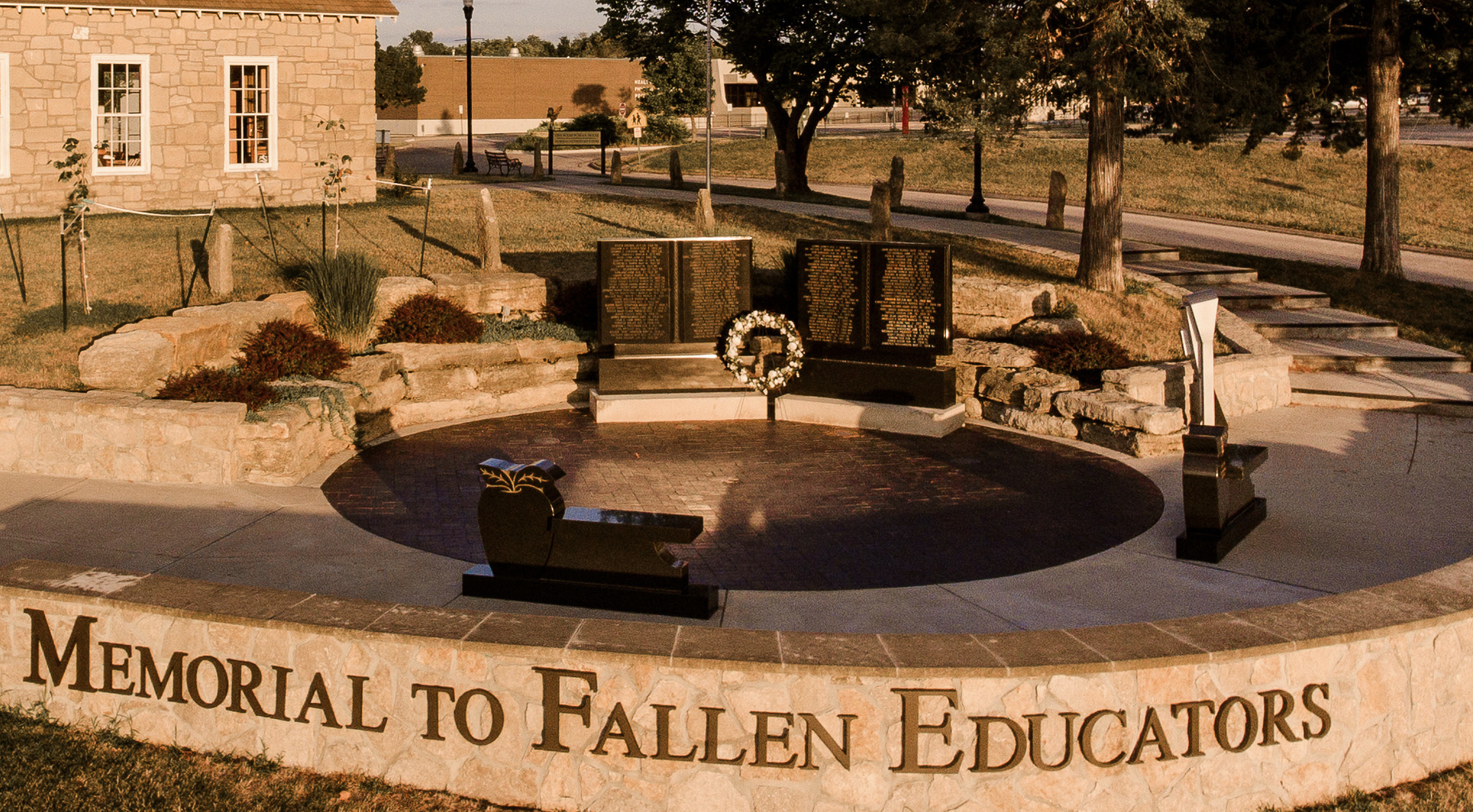The door just opened on the National Memorial to Fallen Educators, and a group of teachers, administrators and school staff from all over the country gathered to pay their respects to those who had dedicated their lives to education.
As visitors walked through the memorial in Emporia, Kansas, they were struck by the powerful words and images that celebrated the lives of educators. They saw photos of smiling educators, handwritten notes from students expressing their gratitude, and touching stories of how these individuals had inspired their students to reach for the stars and achieve their dreams.
In one corner of the memorial, a group of people stood together, holding hands and wiping tears from their eyes. They had come to pay tribute to their colleagues who had passed away, but also to honor the profession they had dedicated their lives to.
The memorial is a somber and poignant tribute and place of deep emotion—a site that evokes both sadness and respect for the sacrifices made by educators in service to others. It was dedicated in 2014 and serves as a testament to the sacrifices made by those who have devoted themselves to educating the next generation.
The idea for the memorial originated after the Sandy Hook Elementary School shooting in Connecticut. The events of that day in 2012 resulted in the loss of innocent lives, including educators and children. Among the fatalities were six school employees, including the school's principal, AFSA member Dawn Hochsprung.
Hochsprung was a beloved community leader who had been the principal of Sandy Hook since 2010. She was known for her dedication to her students and her innovative approach to education. During the shooting, she reportedly ran toward the gunman to protect her students and was fatally shot.
The tragedy at Sandy Hook Elementary School had a profound impact on the community and the nation. It sparked renewed debate about gun control laws, led to increased security measures at schools across the country and helped birth the national memorial.
When the memorial was first dedicated, Connecticut State Federation of School Administrators President Dr. Anthony Salvatore took part in the ceremony. Salvatore, who also serves as an AFSA general vice president, was an administrator at Sandy Hook Elementary School a year before the shooting, and personally knew many of the people who died that day.
Salvatore has taken on the cause of the National Memorial to Fallen Educators as his own, sharing information about the memorial so that fallen educators are remembered.
“One of the biggest fears that I keep hearing from survivors, teachers and family members is that people will be forgotten,” Salvatore said. “People in our community are distressed that the names of those that died will be lost and turned into statistics or be boiled down into a number. This memorial reminds us that the people who died are more than a number.”
On Sept. 21, 2015, U.S. Sen. Jerry Moran of Kansas introduced a bill to designate the memorial as the National Memorial to Fallen Educators. While the bill was signed into law finally on April 30, 2018, it did not provide federal funds; donations by private citizens and organizations are key to keep the memorial and the memory of these great educators alive.
At an AFSA General Executive Board conference in the fall of 2022, Salvatore gave an impassioned speech about the importance of the memorial, which inspired other AFSA members to act.
Donis Coronel, executive director of the Administrators Association of San Diego City Schools, AFSA Local 134, and an AFSA general vice president, remembered that bus mechanic John F. Joaquin had lost his life on the job, “Anthony’s words reminded me that when I was in high school that a bus broke down during a huge rainstorm, and unfortunately another vehicle slid and John was killed instantly.” Coronel alerted memorial staff and told them this story from decades ago. This summer Joaquin’s name will be inscribed on the memorial.
The design of the memorial is simple, yet powerful. A circular plaza is surrounded by granite columns inscribed with the names of fallen educators from across the country. At the center of the plaza stands a bronze statue of a teacher holding an apple, symbolizing the dedication and sacrifice of those who have given their lives in service to their students.
The names memorialized on the granite walls date as far back as 1764, before the Declaration of Independence was signed. The memorial’s website catalogues the stories behind the names on the wall, providing a unique insight into the history of violence in American education. The oldest name inscribed is that of Enoch Brown, who was killed in 1764 alongside 11 students in what is considered to be the first school massacre in America. Brown and his students were targeted by a group of Native Americans as retaliation against the scalping of their people during Pontiac’s War.
While stories such as Brown’s seem ancient today, the stories of other educators still resonate. In 1899, T.B. Hunter was stabbed and killed by a student after disciplining the student for not listening during instruction.
Today, visitors to the memorial can pay their respects to these heroes and reflect on the profound impact that educators have on our society. The National Memorial to Fallen Educators stands as a testament to the enduring legacy of those who have given their lives in service to others.
Do you know of an educator who died while serving students? Send an email to hallfame@emporia.edu with their name and story to request that they be added to the memorial. To donate, click here.

